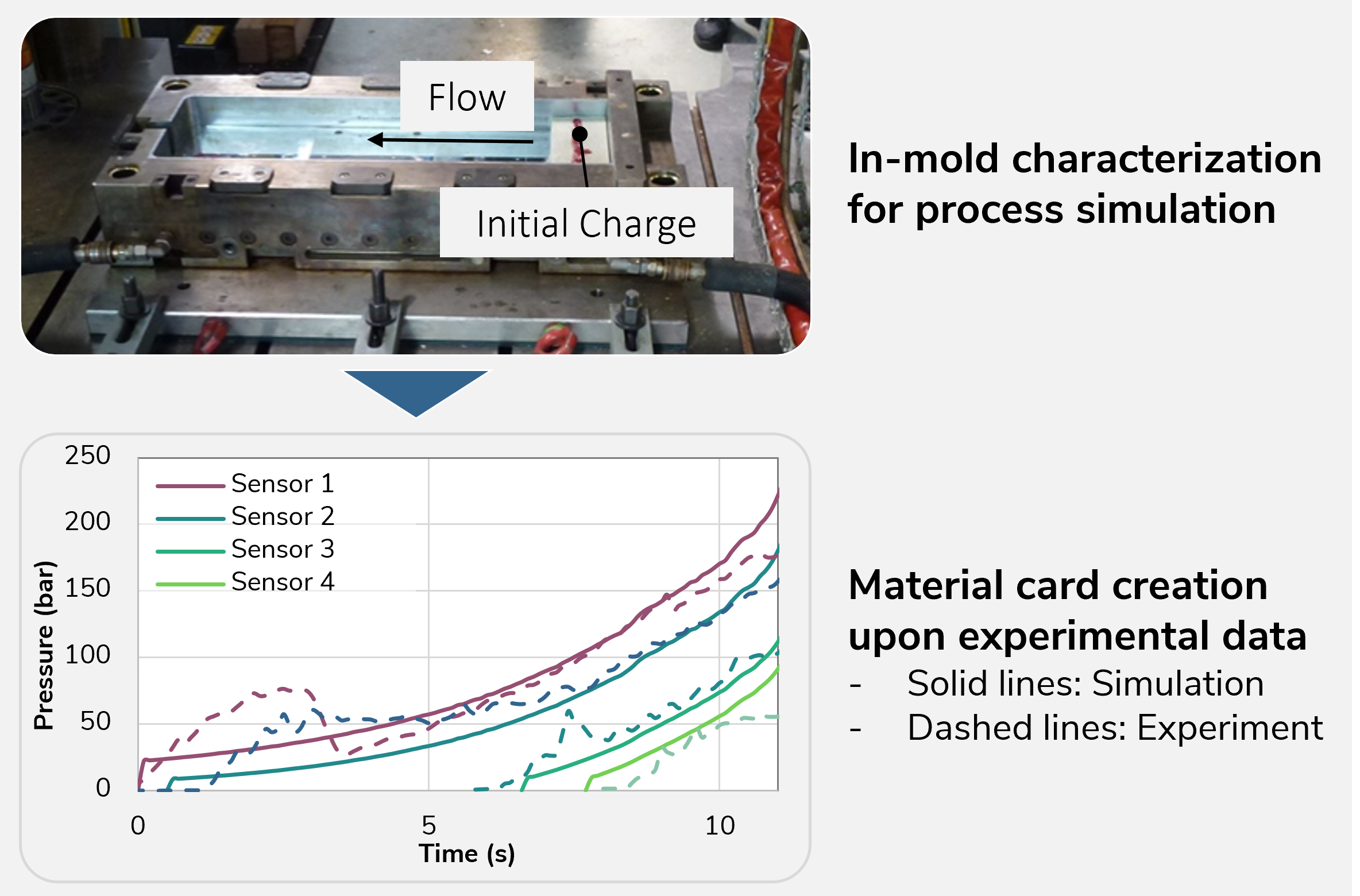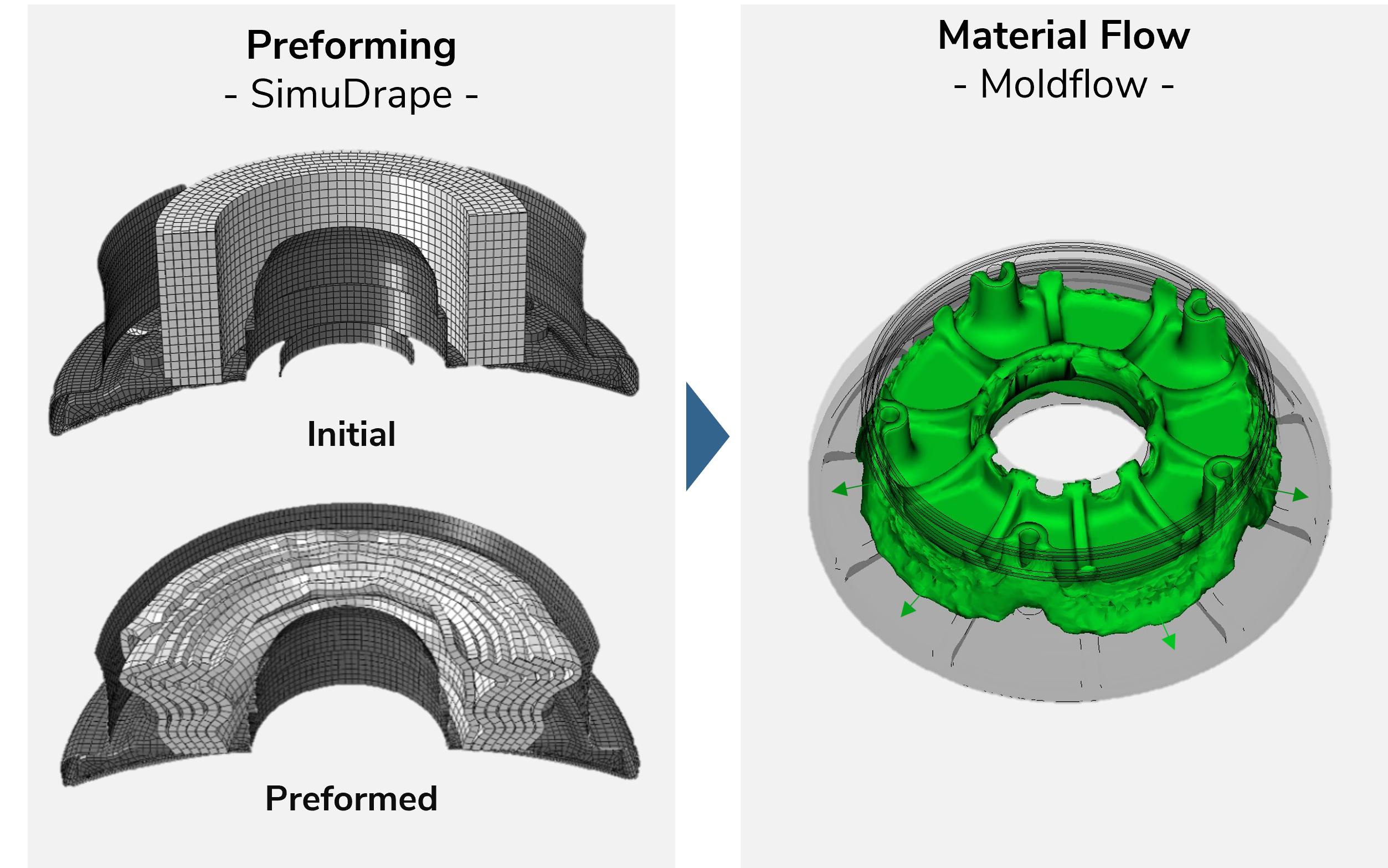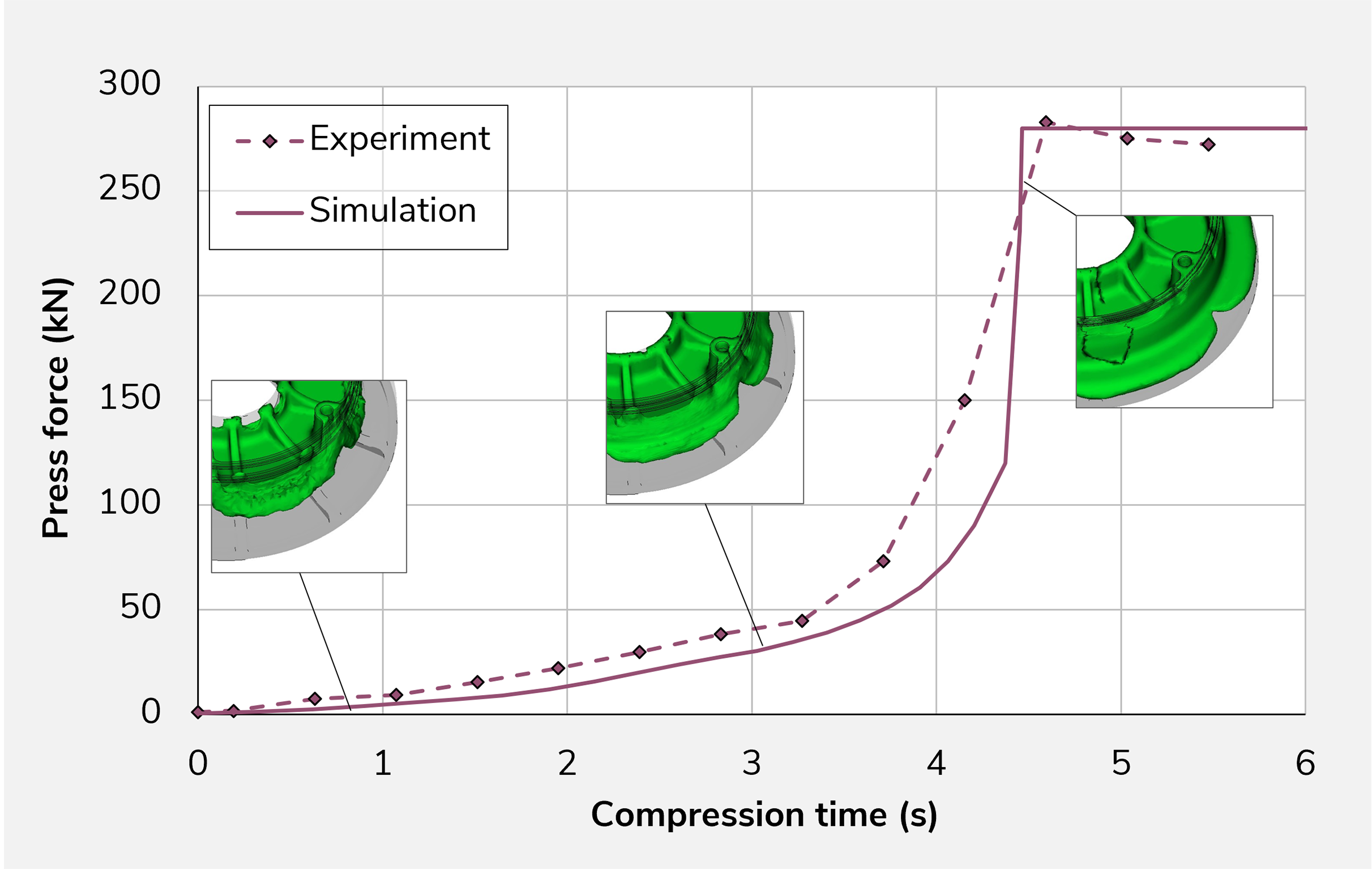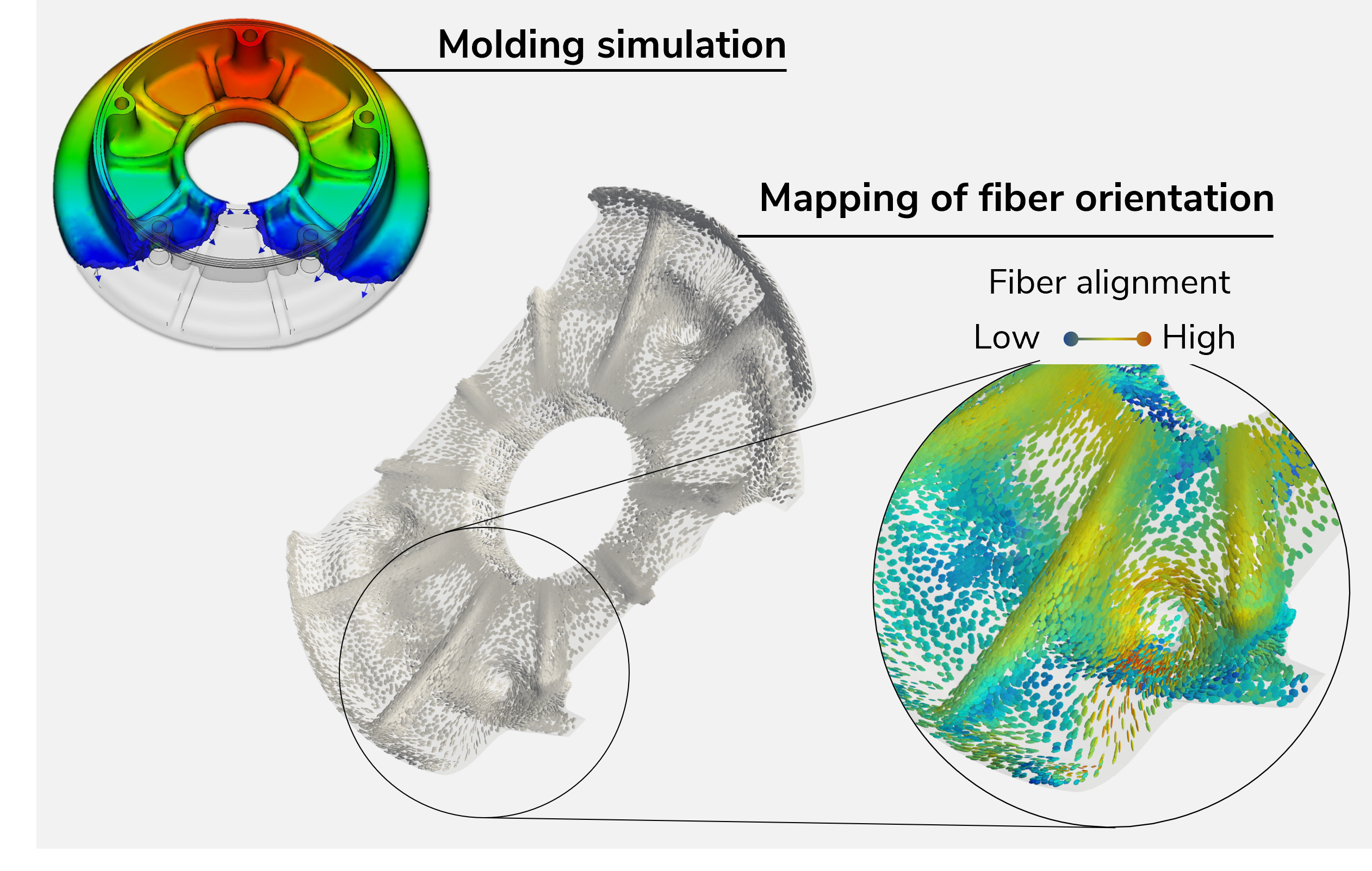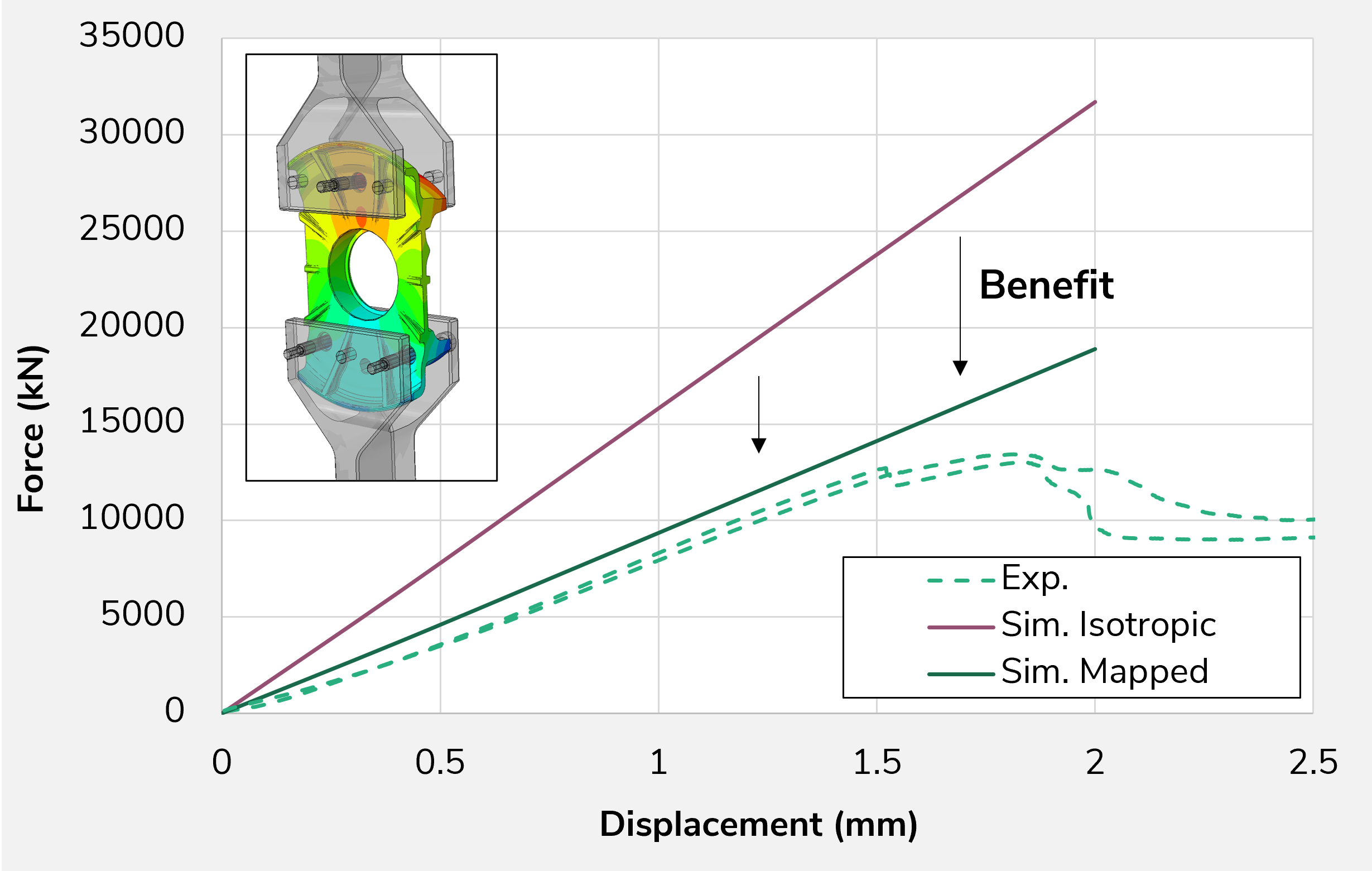Motivation
Conventional approaches to molding simulation often lack accuracy when it comes to SMC materials since well-established material card creation approaches for LFT (Long Fiber Thermoplastics) are usually applied. These approaches, however, neglect the wall slip, which determines besides the viscosity of the material the flow behavior of SMC.
Simutence uses an in-mold characterization approach to accurately characterize both the viscosity and the wall slip of the SMC. The acquired data is used to parameterize flow models built into commercial molding simulation software, such as Moldflow.
Moreover, the flow-induced local fiber orientation is usually neglected when it comes to FEA (Finite Element Analysis). Simutence provides SimuChain, an add-on for Abaqus/CAE, which enables the consideration of the local fiber orientation predicted by molding simulation in FEA.
In a collaboration project with Blackwave, the Simutence virtual process chain for SMC materials has been validated for the rim of a lightweight airplane.


